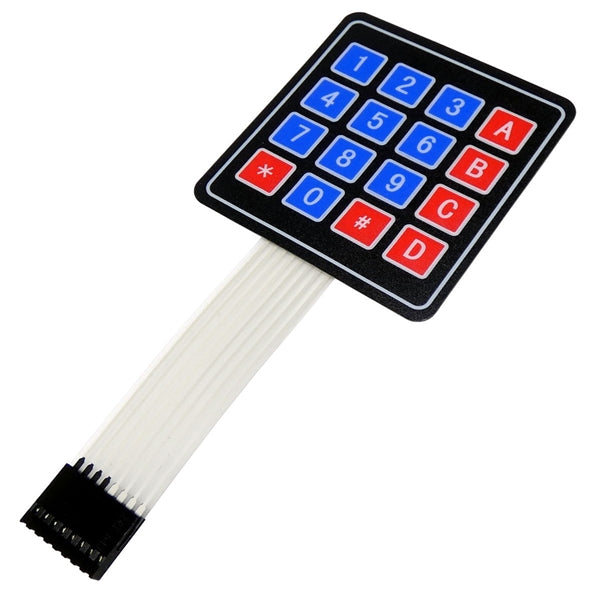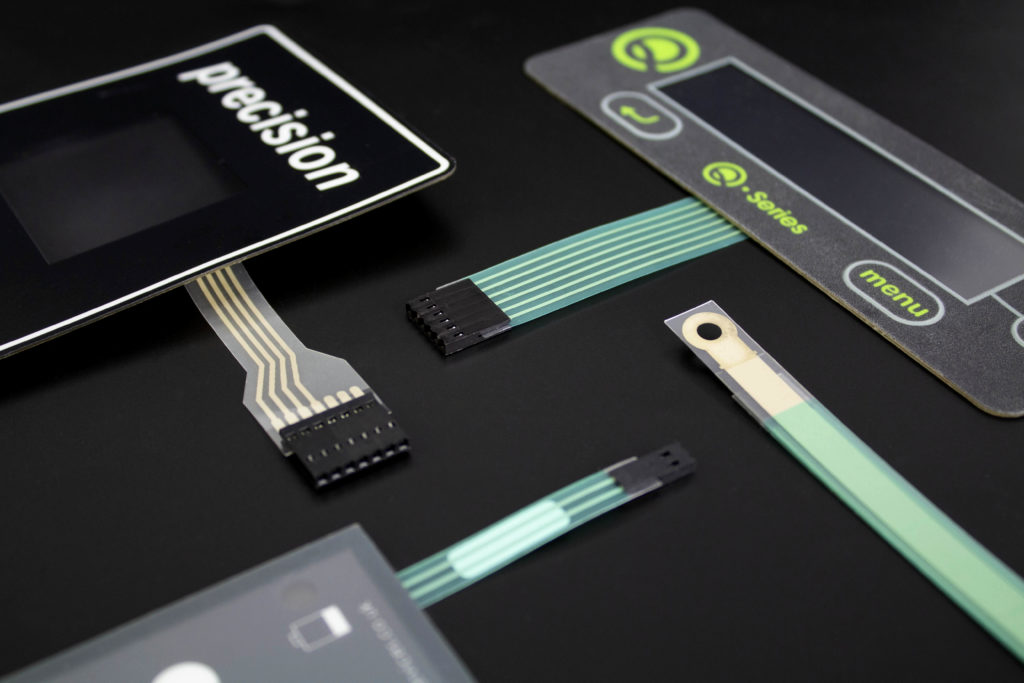Understanding the Significance of Membrane Switches in Interface
Membrane buttons are important components in the design of effective user interfaces, promoting not just performance however also boosting visual appeal and user interaction. As we check out the future trends and various advantages connected with Membrane innovation, it comes to be clear that these buttons are a lot more than simply components; they represent a convergence of technology and practicality.
What Are Membrane Switches?

The spacer layer, which has sticky buildings, enables the separation of the circuit layer from the overlay, making sure that the switch stays in a non-activated state until pushed. When pressure is put on the overlay, it compresses the spacer layer, bridging the gap and finishing the circuit in the underlying layer. This style not only lowers the physical room required for standard mechanical switches yet also boosts the longevity of the gadget, as Membrane switches are normally resistant to dirt, wetness, and other ecological variables.
Commonly located in applications varying from consumer electronic devices to medical gadgets, Membrane switches are integral to contemporary innovation, providing a easy to use and reliable interface that lines up with contemporary style needs.
Benefits of Membrane Buttons
While various switch modern technologies exist, Membrane Switches offer distinct advantages that make them especially preferable in numerous applications. One of the primary benefits of Membrane switches is their portable design, which permits space-saving applications in devices where real estate is limited. Their slim profile not only improves visual appeal yet likewise promotes lightweight construction.
One more substantial benefit is their resistance to environmental aspects. Membrane buttons are typically sealed against wetness, dirt, and pollutants, making them ideal for use sought after settings, such as medical tools and commercial tools. This longevity expands the life expectancy of the switch, lowering maintenance prices and boosting reliability.
Moreover, Membrane switches can be customized to fulfill particular design demands, incorporating unique graphics and colors that boost user communication. Their responsive comments options can additionally be tailored to supply an enjoyable individual experience. Additionally, Membrane switches are economical, especially in high-volume applications, as they can be created effectively.
Applications in Numerous Industries

In the customer electronics field, Membrane buttons are widespread in gadgets such as microwaves, cleaning machines, and remotes. Their tactile feedback and aesthetic choices enhance customer experience while providing a smooth, modern-day look. Additionally, automobile manufacturers utilize Membrane switches in control panel controls and infotainment systems, where area is limited, and customer engagement is crucial.
Furthermore, the industrial sector leverages Membrane switches in control panels for equipment and equipment, permitting user-friendly procedure in commonly harsh atmospheres. Their resistance to chemicals and moisture makes sure longevity and dependability in these applications. Overall, the flexibility of Membrane Switches adds considerably to their widespread usage, making them indispensable in various technological domain names.
Style Factors To Consider for Membrane Switches

When designing Membrane switches, numerous vital factors to consider need to be taken into consideration to ensure optimum performance and individual experience. Firstly, the option of materials is vital; choosing long lasting, high-grade substrates can enhance the switch's long life and resistance to ecological elements such as wetness and temperature variations.
Secondly, the design of the visuals overlay need to prioritize clearness and ease of usage. Icons and message should be clear, and the format must assist in user-friendly interaction (membrane switches). Furthermore, responsive feedback is vital; integrating a responsive dome or various other devices can enhance the individual experience by supplying physical confirmation of activation
An additional vital aspect is the switch's electric performance. Developers need to make sure that the conductive traces are properly designed to reduce resistance and avoid signal disturbance. This entails analyzing the needed actuation pressure and making sure compatibility with the digital parts they will certainly user interface with.

Future Fads in Membrane Modern Technology
As modern technology proceeds to advance, Membrane switches are poised to advance dramatically, driven by advancements in materials and manufacturing techniques. One emerging trend is the consolidation of sophisticated materials, such as conductive inks and versatile substratums, which improve resilience and lower the total weight of Membrane switches. These products not only boost the tactile response yet additionally permit the design of switches that can hold up against harsher environmental conditions.
Additionally, the integration of touch-sensitive technologies is changing typical Membrane Switches into even more interactive individual interfaces. Capacitive touch sensors installed within Membrane button panels can give a much more intuitive and responsive user experience, lining up with the growing need for sleek, modern-day styles in customer electronic devices.
Furthermore, innovations in printing methods, such as electronic and 3D printing, make it possible for rapid prototyping and personalization of Membrane switches. This flexibility allows manufacturers to react quicker to market needs and consumer preferences.
Finally, sustainability is ending up being a considerable emphasis, with manufacturers exploring eco-friendly materials and procedures. As these fads unfold, the future of Membrane modern technology assures boosted capability, visual appeal, and environmental responsibility, solidifying their duty in advanced interface across numerous sectors.
Conclusion
To conclude, Membrane Switches stand for an essential element in the style of user interfaces, integrating functionality with visual flexibility. Their advantages, including durability and resistance to ecological aspects, make them suitable for diverse applications across various sectors. Moreover, thoughtful layout considerations improve customer communication and experience. As improvements in modern technology continue, the evolution of Membrane buttons is anticipated to more improve user interfaces, driving innovation and enhancing functionality in an increasingly complex technical landscape.
Membrane switches are integral elements in the layout of reliable user interfaces, facilitating not only performance but likewise enhancing aesthetic appeal and customer interaction.Membrane Switches offer as a crucial part in various user interfaces, helping with a seamless communication between customers and digital tools.While countless button technologies exist, Membrane Switches deal distinct benefits that make them particularly desirable in numerous applications.Furthermore, Membrane buttons can be tailored to additional hints satisfy certain layout needs, incorporating distinct graphics and shades that boost individual communication.In verdict, Membrane click here to find out more Switches represent a crucial element in the style of customer interfaces, incorporating performance with aesthetic versatility.
Comments on “Exploring the Future of Membrane Switches in Emerging Technologies”